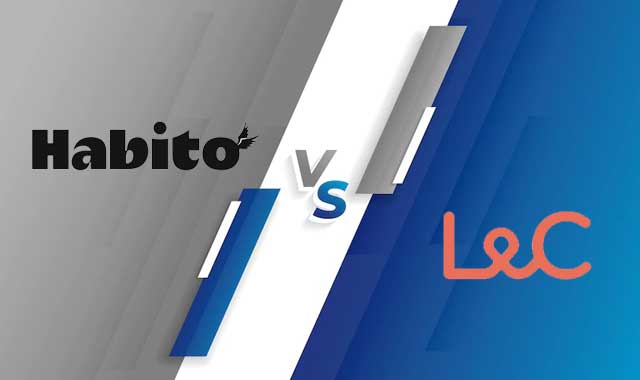Plum vs Moneybox 2022: Whether you should invest your money in a Plum or a Moneybox. Both of these investments have their pros and cons, so it can be challenging to decide which is the right option for you.
In today’s market, there are many investment options from which one can choose. You can invest in stocks, bonds, real estate, and multiple other assets. But which is the most suitable alternative for you? In this post, we’ll compare two popular investment options: plums and moneybox. Which will come out on top? Keep reading to find out!

What is Plum?
At first glance, Plum may seem like an unusual choice for investors. This online platform is based on a unique concept: investing small amounts of money over time to build up your savings. Unlike many traditional investment platforms, Plum allows you to invest as little as $5 at a time – making it an ideal option for investors with smaller budgets.
There are two key ways that Plum helps you grow your money: by investing it in a diversified portfolio of assets and by automatically transferring small amounts of money into your account each day. Plum calls this concept ’round-ups’.
For example, you spend $3.50 on a coffee every morning. Plum automatically rounds up your purchase to $4 and invests the extra 50 cents into your savings account. Over time, these small amounts of money can add up – helping you grow your wealth over time.
While Plum is a relatively new investment platform, it has already attracted many users who appreciate its simple and convenient approach to saving and investing.
What is Moneybox?
Moneybox is another popular investment platform that allows users to grow their wealth over time. Like Plum, moneybox offers a simple and convenient way to invest small amounts of money each day.
However, there are a few key differences between Plum and moneybox. For starters, moneybox invests your money in a set portfolio of stocks, bonds, and other assets – whereas Plum offers a more flexible approach to investing. Another key difference is that Plum allows you to round up your purchases daily, while moneybox takes a more traditional approach – allowing users to invest once or twice a week.
While Plum and moneybox offer a simple way to grow your wealth, they differ in their approach and investment options. Ultimately, the choice between these two platforms comes down to your personal preferences and goals. Do you want to invest small amounts of money daily, or do you prefer to save up a more considerable sum to invest once or twice a week? Think about your options and make the best decision possible.
Investment Options: Plum vs Moneybox
You may invest your money with the Plum tax-free Stocks & Shares ISA wrapper. Alternatively, if you already have a Stocks & Shares ISA elsewhere, you can invest in a generic General Investment Account (GIA). This way, you can enjoy tax-exempt investments of up to £20,000 per tax year.
In the realm of investing, Plum provides a simple interface that newcomers will appreciate. You can invest your money in various “niches,” each made up of stocks and bonds from multiple companies. For example, the ‘Rising Stars’ category includes new companies in Asia and Africa that are becoming giants. While on the other side, ‘Best of British’ includes shares from the largest 100 public companies.
Moreover, there are three fundamental Portfolios (slow and steady, balanced bundle, or growth stack) to select from, each with a different range of loss probability depending on the allocation percentage between bonds and equities.
On the other side, MONEYBOX offers a wealth of investment options. The app allows you to create a pension pot and general investment account. If you’re a complete novice to investing and aren’t expecting to save considerable sums of money, the GIA is most likely your best option. Moneybox also offers a savings-only account with the name Cash Lifetime ISA. It pays 1% AER and has no other charges.
Moneybox’s portfolio choice is straightforward. It’s ideal for individuals who don’t want to deal with the hassle of choosing funds and only require a passive investment strategy. The investment portfolios namely are; Cautious, Balanced, and Adventurous.
Fees: Moneybox vs Plum
Moneybox is also free, to begin with, just like Plum. The charges are £1 a month after your trial period has ended. There is another recurring charge of 0.45% that applies per annum. Moreover, a 0.3% max charge is also applicable for fund provision each year, but it’s payable every month. Furthermore, it’s worth noting that this fund provision fee varies with portfolio.
On the other side, Plum is free to use immediately if you only want to save money. That’s sure to attract the interest of anybody new to a financial management platform. Furthermore, there are no limits on how much money you may put in and withdraw.
Plum fees vary with the investment product; this will add extra costs to the total pricing of your account. On average, you will pay 0.51% of annual and provider charges. You’ll pay just £1 per month for “Plum Plus” investing services. Up to a maximum, a fund provider fee of 0.9% and a management fee of 0.15% will also apply.
Plum Pro is available with a monthly subscription for £2.99. Plus and Pro subscriptions are Free throughout the first month and may be cancelled anytime.
Plum Pros and Cons
Pros
- Best for newcomers as a free version is available
- No need to manage your savings.
- Easy-to-use interface
- It offers a variety of investment options
Cons
- Monthly fees apply after the free trial period ends for premium plans
- Plum fees vary with the investment product, which can add extra costs to the total price of your account
- More advanced investors may find the platform too simple or limited in features and customization options.
MoneyBox Pros and cons
Pros
- Wide range of investment options, including stocks, bonds, and other securities
- The simple and easy-to-use interface is suitable for beginners or casual investors.
- Low fees compared to other platforms.
- Ability to create a pension pot or general investment account
Cons
- Limited functionality and customization options compared to more advanced platforms.
- It may not be suitable for more experienced investors who want more control over their accounts.
- Fees can add up over time, depending on the investment strategy you choose to follow with moneybox.
Is my Investment Safe with Moneybox or Plum?
At all times, there is some risk associated with any investment. But thankfully, Moneybox and Plum are both regulated by the FCA. It means you’ll get the protection of up to £85,000 in case of bankruptcy.
Conclusion
Both plum and moneybox offer investors a simple way to grow their wealth over time. There are, however, some significant distinctions between the two platforms.
Plum allows users to round up their purchases daily, while moneybox takes a more traditional approach – allowing users to invest once or twice a week. Plum also offers a more flexible approach to investing, while moneybox invests your money in a set portfolio of stocks, bonds, and other assets. Ultimately, the choice between these two platforms comes down to your personal preferences and goals.
Do you want to invest small amounts of money daily, or do you prefer to save up a more considerable sum to invest once or twice a week? Consider your options and make the choice that’s right for you. Whether you’re a novice or an experienced investor, plum offers a variety of investment options to suit your needs. However, with its relatively low fees and straightforward interface, plum may not be ideal for more advanced investors who require greater.


